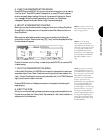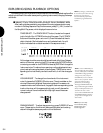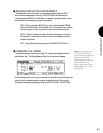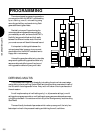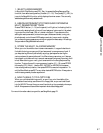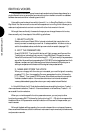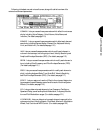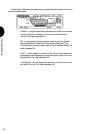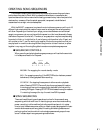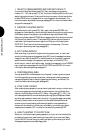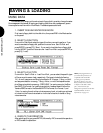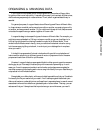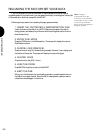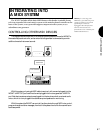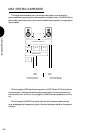
GETTING STARTED
61
CREATING SONG SEQUENCES
The process of creating a song sequence may be as simple as recording a solo piano
performance from start to finish, with no subsequent alterations, or as complex as a
quantized dance floor techno marvel with a heavy groove and many instrument parts that
starts as a four-measure riff and is copied, appended, transposed, note shifted and
crescendoed into an eight-minute masterpiece!
With the W5/W7, a sequence is a piece of music inside a song memory with up to 16
different Instrument parts that s as short as you want or as long as internal song memory
will allow. Depending on the size of your songs, you can store between one and sixteen
songs in song memory at any one time while the power is on (but must be saved to floppy
disk before the power is turned off). Therefore, a song sequence may be a complete song
from start to finish, or it might be the A part of a song, while another is the B part, and
still another is the C part for working on smaller chunks of a song at a time that you
can play back in numeric order using the Next Song function to hear in context, or piece
together in any way you like using Song Jobs to create one complete song sequence.
●SEQUENCER CONTROLS
When recording and playing back song sequences you will use the three controls
in the Sequencer section on the panel.
RUN
SEQUENCER
STOP/TOPRECORD
RECORD - For engaging the record standby mode.
RUN - For engaging recording (if the RECORD button has been pressed
beforehand) or song playback after recording.
STOP/TOP - For stopping the sequence in either record or playback
status. Pressing STOP/TOP once will stop the song at a specific location,
from where you can continue recording or playback from that point by
pressing RUN again. Pressing STOP/TOP twice resets the song to measure
1 for starting the song at the top the next time RUN is pressed.
●SONG SEQUENCING
There are three different types of operations involved in the process of song
sequencing, which all work hand-in-hand to give you enormous music making
power:
recording
, in either realtime (including overdub and punch-in) or step-
time to input the basic sequence;
editing
, or inserting and changing specific music
events inside measures; and song
jobs
, or inserting and deleting measures and
performing other functions which involve single measures and groups of mea-
sures. The basic steps in song sequencing are as follows:



